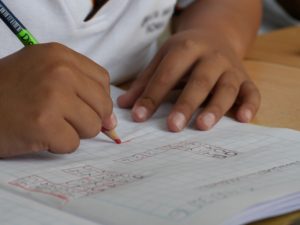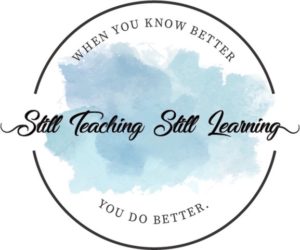
Keeping students engaged during content area reading or a literature study is a challenge. Everyone is at different reading levels, yet we all need to understand the content.
How do we get every student to stay engaged? Try one of these five strategies and see how it works for your class!



1 – Teach your students how to annotate the text.
Here’s how to do that.
~Explain what annotating is (highlighting or marking important information) and what it isn’t (highlighting everything!).
Not everything is important. Rereading to deepen your understanding IS important. Annotating helps your brain focus on what you need to reread, understand, and clarify with others.
~Here are some examples of things you might annotate:
*evidence for a writer’s claim or opinion
*identifying character traits/motivations (or those of a person)
*summarizing different sections (then putting all that together to get a summary of the entire article)
*identifying main idea & important details
*identifying & defining key vocabulary
*looking for patterns or how events are connected
*putting a question mark beside sections that are confusing
*circling words that are difficult to define from the text
*putting a star beside sections that they want to discuss with others



~Model your own annotating WITH students at first. Depending on the age of your students, you might need to do this several times.
~When you first allow students to annotate on their own, consider having them share their annotations, understandings, and questions with a partner or small group of three or four students.



2 – “Save the last word for me” strategy
~Put students in small groups of four. One student should be the timekeeper and one should be the facilitator who starts the discussion.
~Give everyone a copy of the text and have them either annotate the text or fill out a graphic organizer if the text cannot be marked.
~Read just one section of the text. Everyone reads silently and annotates or takes notes.
~The facilitator starts the discussion by sharing their thinking about the text. (Set a time limit for each person to speak, based on the length of the text or the amount of time in your class. Usually, 30 seconds to one minute works fine.)



~When time is up, the timekeeper indicates it’s time to move to the next student.
~The next student can comment on what was shared before and then shares their own thinking.
~When time is up, the next student will share and repeat. Continue until everyone, including the timekeeper, has had a chance to respond.
~The facilitator then gets the “last word”. They can share how their thinking changed after listening to others or they might re-emphasize their earlier points.



3 – The 1-3-6 Protocol
~This protocol helps students develop their own ideas and opinions about a text or a topic. Here’s a video that shows it in action.
~First, give students an article to read.
~Students then individually write their responses to the article. You might ask them to write five of the most important facts, character traits about a character, something they learned or wondered about, or something that surprised them.
~Next, put students in group of three to share their ideas. The small groups will group their ideas together and write a list (on paper, a whiteboard, a small poster, etc.).



~Now put two small groups of three into a larger group of six. Have the students share their ideas in this larger group.
~That group of six will also write a list of their ideas and put them together.
~Finally, share with the whole group.
~This is an especially helpful protocol to use with students who are quieter or who have more difficulties with language (ELL students, for example).



4 – Finding the gist & unfamiliar vocabulary
~Have students individually read the text once, all the way through from start to finish.
~Then have them reread a section of the text and think about the “gist” independently. They should also underline things they DO understand or know about, and then circle any words they don’t know.
~Now put them into pairs or small groups and have them discuss their ideas with their partner or group.
~As a group, they should write the gist of the section on a sticky note.
~Then have them reread another section and repeat the process.



5 – Say Something (a paired reading strategy)
~Assign reading partners.
~Assign a portion of the text for students to read (or have partners decide how far they will read) before they stop to “say something.”
~Give students some ideas of WHAT to say when they get to their stopping point: they might ask a question, summarize what they’ve read so far, ask for clarification about a key point or an unknown word, point out an interesting idea, etc.



~Model the “say something” first.
~Have students read the text silently, then each of them will “say something” when they get to their stopping point.
~Continue the process until the reading selection is complete.
~Have a whole group discussion of the text.



A #sustainableteaching tip: choose structures that are simple to implement (like the ones I’ve shared), but which have a big impact on your students. Then stick to those structures. Finding what works and making it your tried-and-true, go-to strategy will simplify your teaching time!
